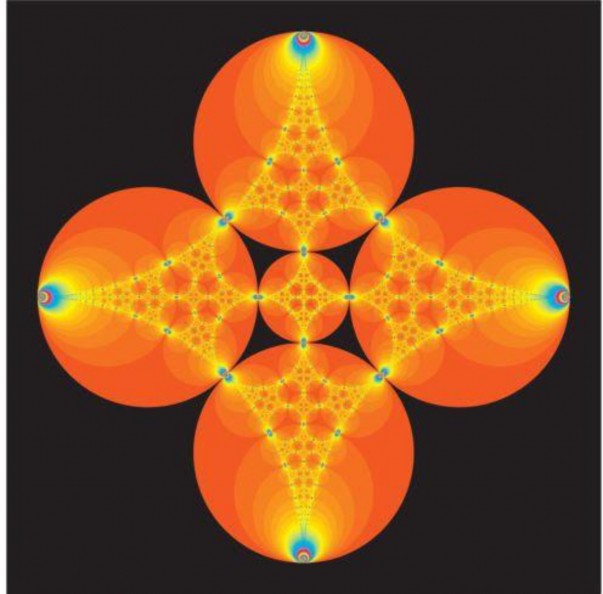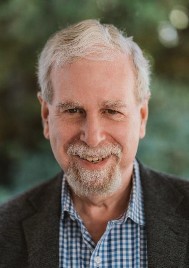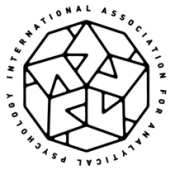
Joe Cambray
Synchronicity: An Acausal Connecting Principle
A key signature concept in Jung’s vision of the world, synchronicity was defined by Jung as an acausal connecting principle, whereby internal, psychological events are linked to external world events by meaningful coincidences rather than causal chains. While of profound theoretical significance, anecdotal clinical evidence served as primary descriptive examples in Jung’s writing. Perhaps the most well-known case involved a patient’s dream of being given a piece of gold jewelry in the shape of a scarab beetle being told as a knocking on Jung’s consulting room window drew his attention to a scarabaeid beetle (a rose-chafer) seeking entry. Jung caught the beetle, handed it to the patient which had a positive, transformative impact on the case, as it broke through her defensive rationalism according to Jung (1960, 22).
Origins and Development of the Synchronicity Hypothesis
The first known presentation of the notion of meaningful coincidences as being a fundamental principle can be found in a private seminar on Dream Analysis Jung was conducting in 1928. In response to seminar participants’ questions about a remarkable clustering of events around a particular set of images, Jung replied:
The East bases much of its science on this irregularity and considers coincidences as the reliable basis of the world rather than causality. Synchronism is the prejudice of the East; causality is the modern prejudice of the West. The more we busy ourselves with dreams, the more we shall see such coincidences—chances. Remember that the oldest Chinese scientific book [the I Ching] is about the possible chances of life (Jung and McGuire 1984, 44-45).
Later in December of 1929, Jung goes on in this seminar to state: “I have invented the word synchronicity as a term to cover … things happening at the same moment as an expression of the same time content” (ibid., 417). Jung first mentions the term publically in 1930 in the address he gave at the memorial service for Richard Wilhelm.
The borrowing from Chinese Taoist philosophy in formulating the synchronicity hypothesis was spurred by a remarkable coincidence that marked Jung’s decision to stop working on The Red Book, and return to the world. In 1928 as he was in the midst of working on the castle-like mandala found on page 163 of The Red Book, Jung received the manuscript of the German translation of The Secret of the Golden Flower from his friend Richard Wilhelm who was living in Tsingtao (Qingdao) at the time. Wilhelm was asking Jung to consider writing a psychological commentary to accompany his translation of this ancient, Taoist alchemical text. For Jung the imagery of the frontispiece of text, the Vajra mandala, bore a striking resemblance to his castle-mandala (see Jung 1960, 163).
My interpretation of this coincidence leading to Jung’s winding up his work on The Red Book at the time is based on how this singular event lead to the formulation of the synchronicity hypothesis during his Dream Seminars. This articulation provided a deeper resolution of the central dilemma that had been vexing him since 1914: were his waking visions of October/November 1913 signs of incipient fragmentation and psychosis, or prophecy? The visions were of Europe filling up with blood and wreckage, which in August 1914 began to be realized as World War I broke out in Europe. The transcendent resolution of the polarizing dilemma was a new principle to western science that could explain meaningful coincidence without reducing it to personality, but rather seeing it as fundamental to the nature of reality (Cambray 2014).
The achievement of a larger cosmological vision was aided by Jung’s collaboration with the famous, Nobel Laureate physicist Wolfgang Pauli. Their correspondence holds many keys to the evolution of the hypothesis as marriage of physics and psychology. It took nearly twenty years for them to reach the point of publishing their ground-breaking, controversial ideas. Jung’s contribution to their book stemmed from his 1951 Eranos lecture and was later made into a separate monograph, Synchronicity: An Acausal Connecting Principle. An important step taken by Jung and Pauli was to formulate the notion of the psychoid archetype, imagined as the deepest layer of archetypal reality where the psyche and matter meet and become indistinguishable. Synchronistic phenomena are thought to arise from activations of this level of reality. Harald Atmanspacher and colleagues have been developing and elaborating this line of thinking to great advantage for contemporary views on the mind/matter problem (Atmanspacher and Fuchs 2014)
Reviewing Jung’s arguments in his monograph in light of contemporary science has proved useful. His employment of energic arguments from 19th century thermodynamics to dismiss causality are not truly applicable as they are based on closed systems at or near equilibrium. As humans in the world are open systems far from equilibrium the same logic does not apply, instead we need to use complexity science to investigate the phenomena. This began with a paper by Cambray in 2002 on “Synchronicity and Emergence.” Using the study of complex adaptive system which have the capacity for spontaneous self-organization with emergent properties, synchronistic phenomena become describable in contemporary terms. This move does not invalidate the bulk of Jung’s work on the topic, but give it a broader base in non-linear systems dynamic with a much expanded notion of “causality.” In fact, careful examination of a number of Jung’s conceptions (complexes, archetypes, individuation) as well as his methods (amplification, active imagination, and dream interpretation) reveal them to stand on proto-emergentist perspectives. Complexity science was not truly available during Jung’s lifetime; some of its root clearly appealed to him, for example, self-regulating systems from cybernetics. Jung was an early adopter of self-regulation into his view of the psyche (JAP reference).
Although he did not explicitly cite “Big Bang” cosmology in his arguments, he used language borrowed from this in describing synchronicity. Viewing synchronicity as an act of creation in time, Jung speaks about how “under certain conditions space and time can be reduced to almost zero, causality disappears along with them because causality is bound up with the existence of
space and time and physical changes, and consists essentially in the succession of cause and effect. For this reason, synchronistic phenomena cannot in principle be associated with any conceptions of causality” (1960, 29-30). To return to the creative moment in the history of the universe before the laws of physics have emerged is indeed one way to discuss Big Bang cosmology. Jung is ultimately arguing for a pattern-making tendency to our universe that emerged as a fundamental property of reality even before light/matter/gravity and the other laws of physics came into being.
To place synchronistic patterning at the origins of the universe also evokes a profoundly ecological model of the phenomena—it reveals the interconnectedness of all parts into an emergent whole. This also opens into one of the new, exciting areas for exploration and development, synchronicity’s role in the origins and development of life, which Jung commented on in a late letter to Erich Neuman:
In this chaos of chance, synchronistic phenomena were probably at work, operating both with and against the known laws of nature to produce, in archetypal moments, syntheses which appear to us miraculous….This presupposes not only an all- pervading, latent meaning which can be recognized by consciousness, but during that preconscious time, a psychoid process with which a physical event meaningfully coincides. Here the meaning cannot be recognized because there is as yet no consciousness. (Letters, 1975, 494-5)
The clinical utility of the synchronicity hypothesis has been a topic of on-going study by Jungians. Complexity science has helped contextualize the Jungian approach within the wider field of psychotherapeutics. Through the lens of synchronicity, clinical phenomena not otherwise acknowledged can be examined and explored for their transformational value—an intuitive notion that is receiving solid grounding, such as in ideas of moments of complexity.
Ultimately synchronicity will prove to be a concept for the 21st century, requiring new paradigms to help us explore its range and value. This may include synchronistic phenomena for larger scale events, not just for individuals, but for groups, cultures, and even worlds.
References:
Atmanspacher, H. and C. Fuchs, eds. The Pauli Jung Dialogue, Exeter, UK: Imprint Academic (2014). Cambray, J. (2002). “Synchronicity and emergence”. American Imago 59 (4), pp. 409-434.
_____ . (2014). “The Red Book: Entrances and Exits” in The Red Book: Reflections on C. G. Jung’s Liber Novus, ed. T. Kirsch and G. Hogenson, New York & London: Routledge.
Jung, C. G. (1930). “Richard Wilhelm: In Memoriam.” In The Spirit in Man, Art, and Literature,
Collected Works 15, Princeton: Princeton University Press.
_____ . (1960). “Synchronicity: An Acausal Connecting Principle.” In The Structure and Dynamics of the Psyche, Collected Works 8, Princeton: Princeton University Press.
_____ . (2009). The Red Book: Liber Novus, ed. Sonu Shamdasani. W. W. Norton & Company: New York, London.
_____ . (1975). Letters. Vol. 2: 1951-1961, eds. Gerhard Adler & Aniela Jaffe. Princeton: Princeton University Press.
Jung, C. G., William McGuire, ed. (1984). Dream Analysis, Princeton: Princeton University Press.

Joe Cambray, Ph.D. is President/CEO of Pacifica Graduate Institute; he is Past-President of the International Association for Analytical Psychology; has served as the U.S. Editor for The Journal of Analytical Psychology and is on various editorial boards.
He was a faculty member at Harvard Medical School in the Department of Psychiatry at Massachusetts General Hospital, Center for Psycho- analytic Studies; andformer President of the C. G. Jung Institute of Boston. Dr. Cambray is also a Jungian analyst now living in the Santa Barbara area of California.
His numerous publications include the book based on his Fay Lectures: Synchronicity: Nature and Psyche in an Interconnected Universe, a newly edited volume, with Leslie Sawin, Research in Analytical Psychology: Applications from Scientific, Historical, and (Cross)- Cultural Research and a volume edited with Linda Carter, Analytical Psychology: Contemporary Perspectives in Jungian Psychology. He has published numerous papers in a range of international journals.

